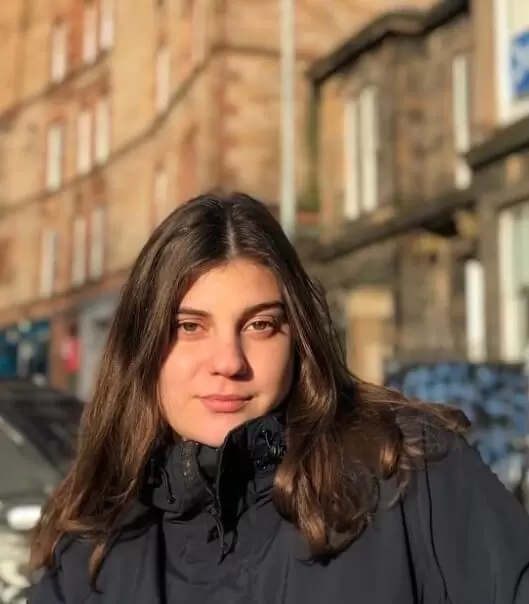Daniel Sparkes, also known as Müdwig, is a British visual artist who works across various art forms, including sculpture, painting, and illustration. Sparkes has exhibited his work extensively across the United Kingdom and internationally, with solo exhibitions at the Calm and Punk Gallery in Tokyo, Sons and Studio in Copenhagen, and Royalcheese Gallery in Paris.
Sparkes’s current work is also featured in The Dividing Line exhibition, part of the world’s first group show at the groundbreaking virtual gallery space, Fluorescent Smogg. Due to the exhibition’s enormous success, its duration has been extended.

Sparkes’s works introduce new esoteric dimensions and alternate realities born from the artist’s exploration of the subconscious. He combines contrasting elements in his art, often playing with the paradox between nature and architecture. The surreal yet dreamy worlds depicted in his work act as vehicles for escaping real-world crises and difficult times.
The visual potential between these paradoxical elements keeps me continually generating artistic ‘solutions’ in my mind and in paint.
Daniel Sparkes aka Müdwig
This interview, while focusing on the creative process, also offers a glimpse into Sparkes’s personality and his perspectives on technology, social media, and the art industry. His artistic objectives centre around worldly pleasures, fame, and leaving a lasting legacy in the art world
Q: First things first, why do you do what you do?
Daniel Sparkes aka Müdwig: Hi there, I predominantly make large-ish oil paintings of cratoon-ey, abstracted characters and objects that visually form awkward still life scenarios and trippy looking monuments……
Sorry! I misread the question. Not ‘what’ , ‘why’.
Classic teenage existential crisis is why I became an artist. (I’ll spare you the Nietzshean rhetoric) I looked up to dead people and thought if I just work in an office and have two kids no-one will give a hoot about me when I’m gone. So posthumous fame-lust was the answer.
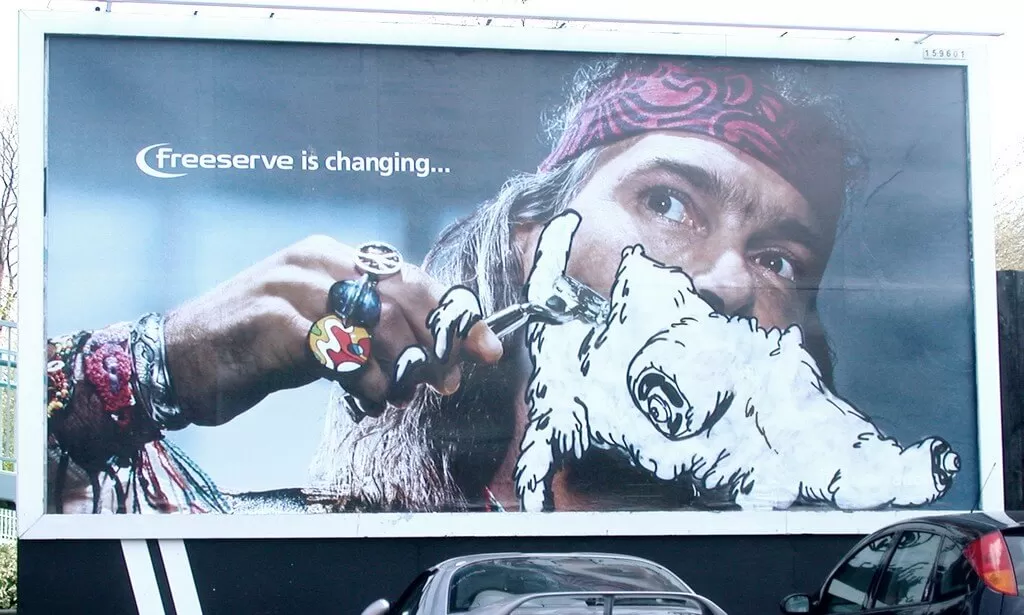
Q: What is your inspiration?
A: Classic painters, Carravaggio, Goya, Guston, Ged Quinn, Rauch all give me a constant drive to make better-weirder paintings. But general inspirations come from all manner of combinations of nature and architecture, landscape and character, still statue and dynamic animal. The visual potential between these paradoxical elements keeps me continually generating artistic ‘solutions’ in my mind and in paint.
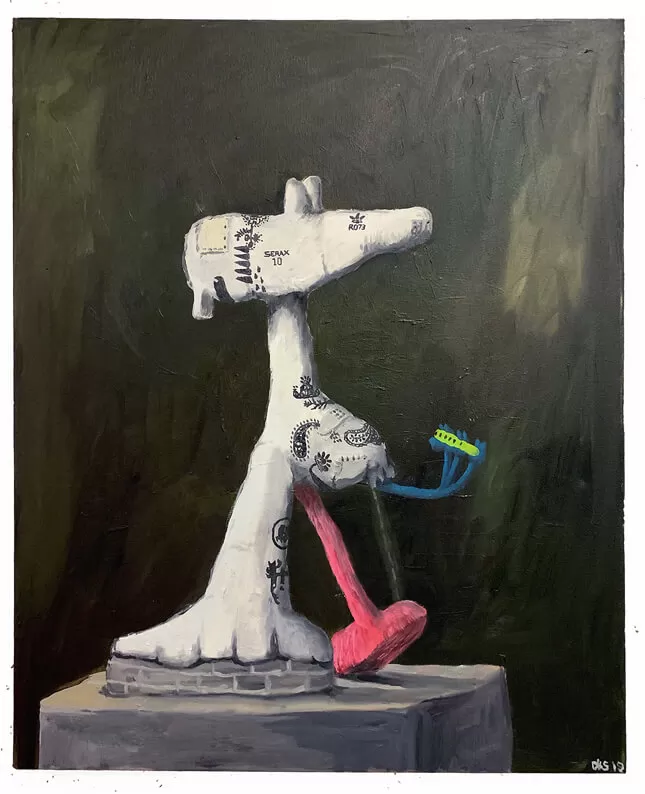
Image courtesy of the artist
Q: What is your creative process when you’re creating?
A: Draw things I see, draw them again from my mind, draw them again in conjunction with some other things, draw again (hopefully improving), then make a painting from the best looking bits. My sketchbooks are messy, repetitive and plentiful.

Image courtesy of the artist
Q: Which is your preferred surface for working on?
A: I’d say canvas at the moment because I’m mainly oil painting . But I do carry a tiny pad around in my pocket and draw in it with a biro all the time…and you can’t beat slapping emulsion and spray paint on a wall. I guess I like most surfaces.
Q: What would you say is an integral part to the work of an Artist?
A: Be unique, say something different, and moving.
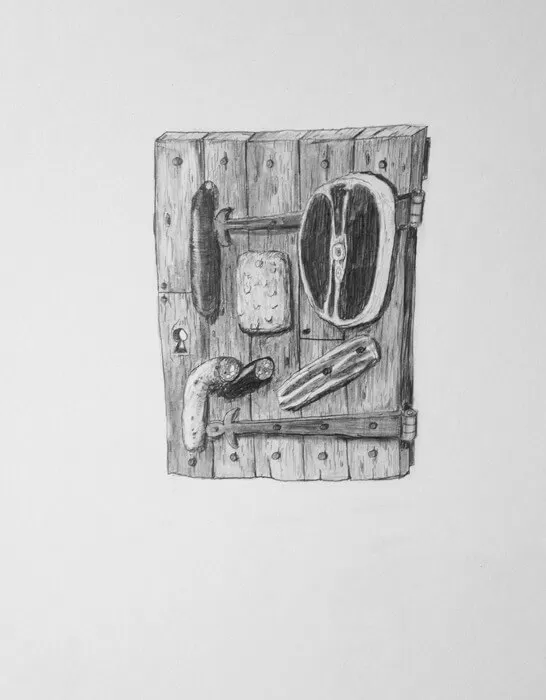
Image courtesy of the artist
Q: What is the reason behind your use of fantasy and surrealism in your work?
A: I’ve tried for a long time to make work that is essentially escapism, thus transcending the misery, chaos and politics of the ‘real’ world. So I draw from cartoon worlds and combine warped versions of natural /magical/historical art to try and create an esoteric, exotic, new realm.
Q: How do you know when a piece is finished?
A: That’s a hard part to refine, you have to go beyond the point where it looks wanting for more but not as far as it looking overdone. But you still need an that imperfect dynamic.. I usually leave a painting about 95% complete for a couple of weeks and than look at it again and a ’cherry’ moment becomes instantly clear and can be added.
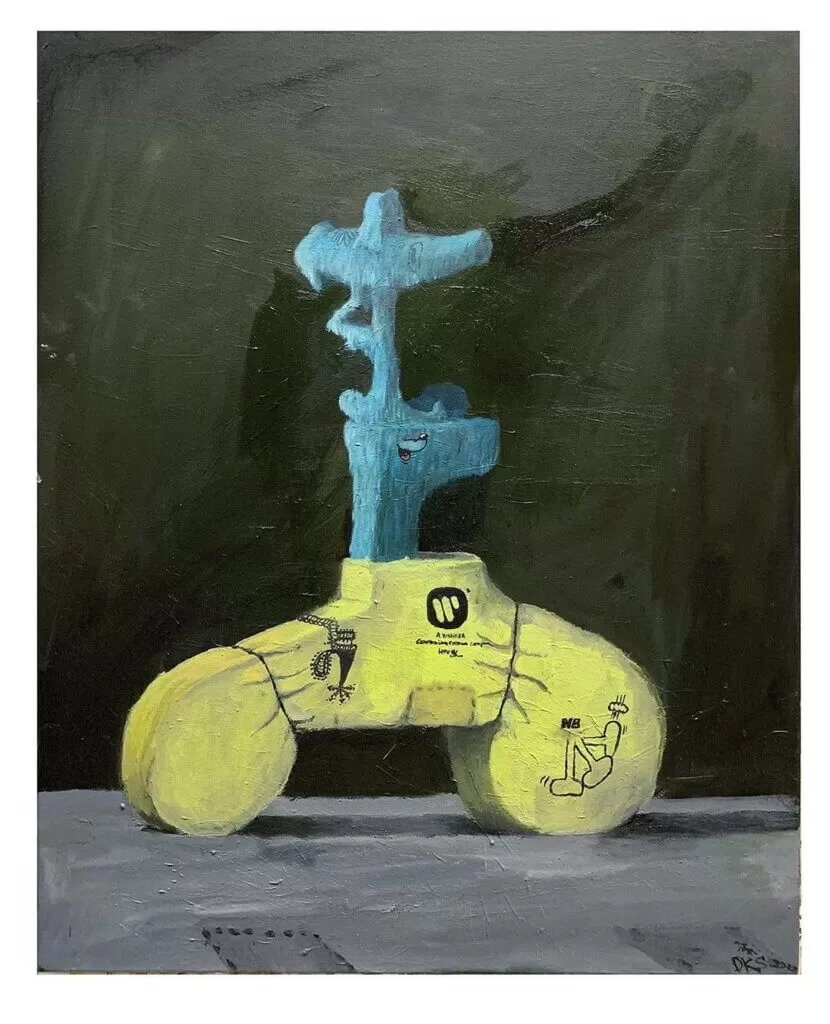
Image courtesy of the artist
Q: How did you feel when you did your first solo exhibition?
A: I think it was in a cafe or tiny boutique style gallery in Bristol somewhere in the year 2001. I was very excited even though the work looked pretty unprofessional it was totally unlike anything else out there at the time. It was very exciting to see it all together, on a wall in the real world, composed.
Q: What is the most rewarding thing for you about being a part of the Art Industry?
A: Theres an overriding freedom that comes from carving out your own visual art route that I obviously find very rewarding. On the industry side, the money, travel and babes are the best bits.

Image courtesy of the artist
Q: Is there anything that worries you about how social media is affecting the promotion of artists?
A: There are inevitable good and bad points to it.
I like the way social media is allowing the talented artists to get their work out there without having to be beholden to or tongue the gallery ‘game’ ; but with that comes a deluge of unvetted dross as the masses are generally pretty average and have dull taste. There is the likelihood , since Covid 19 (phase 1) lockdown, that many galleries might not open again.,, but even with many of them being elitist in their output we still need that intellectual filter to a degree… or do we? I don’t know? Tiiiiiime, will tell.
Social media combined with the new ways we have to physically interact will provide an interesting art world shake up.
To consider that question in a different way, a friend/peer once told me the most important things ‘was to get your art in books/museums’ so people will look at it in 150 years time. and there are artists that are 3x million Instagram followers famous that I’ve never even heard of. (and whose artwork definitely won’t be talked about in 150 years time).
Q: In your opinion, do you have any advice for artists on how to manage their social media image? Or does it even need managing?
A: I shouldn’t offer advice really because I’m not great at it myself . I have a relatively low follower count on the. There are a lot of very unoriginal ‘artists’ who are really just socially media experts using the medium of being an ‘artist’ to generate narcissistic content.
You know, the ones who pose in front of their work with paint consciously applied to their dungarees and cheekbones with a ‘what do you you think?’ comment below question. Sadly, makes me long for the plague. But I’m probably too old fashioned. Can you imagine Van Gogh pouting for a selfie in a cornfield after every day of painting? Personally, I prefer an air of mystery around artist’s profiles, the art should do the talking, don’t overshare, showcase the work, make sure its good and plentiful.

Q: Do you have any advice for artists starting and don’t know where to begin?
A: hahha, I’m waaaay too cynical to be advising the next generation!
Q: What would you say is the best way of getting your art noticed in the age of the internet?
Don’t be obsessed with the internet, aim to do outstanding work that has power and gravity, and worth in the real world and the internet should come find you.

Q: Are there any places where you feel Art and Technology really shouldn’t overlap?
A: I don’t think so, technology is an integral part of our world, you can barely separate it. I personally like the fact I use oil paint and am influenced by styles from 500 years ago, but I also use a computer to adjust things and plan the compositions in my paintings.
https://www.instagram.com/mudwig/
http://www.fluorescentsmogg.com/#trellick
© 2020 Daniel Sparkes/Mudwig



